Ten Characteristics of Ba-Shu Culture in the Global Context
2021-06-17TanJihe
Tan Jihe
Sichuan Academy of Social Sciences
Abstract: First of all, the article identifies the highlights of the documentary The Romantic Shudao. It adopts a panoramic view of the broad Chinese cultural community and depicts the tangible Shudao (road to the Shu area) and the intangible “Romance” associated with it by combining the oral history and collective memory as perceived by common people. The vivid stories can easily reach a wide audience and can thus help to enhance people"s confidence in the ever-prospering local Ba-Shu culture. Secondly, the article explains the ten major characteristics of the Ba-Shu culture by looking at the wonderful ecological landscape, the mystical culture and literature, and the magic spiritual aesthetics of the area in an international and modern context. It also studies the Ba-Shu cultural community and the origins, historical development, and main features of the city clusters within the Chengdu-Chongqing economic circle and analyzes the historical and practical values of building a cultural corridor connecting Chengdu and Chongqing.
Keywords: Ba-Shu cultural community, Chengdu-Chongqing city cluster, ShuirunTianfu(water nourishing Sichuan), agricultural-sericultural civilization, Tianfu silk,ancient Shu culture of immortality
Three Characteristics of the Documentary The Romantic Shudao
The Romantic Shudao(co-produced by Phoenix TV and Sichuan TV)has garnered much attention at home and abroad after it went on air.The documentary is distinct for three reasons.
1. It pays attention to the “common people"s perspective.”
By depicting common people"s everyday activities in great detail and vividness, the documentary weaves mundane stories into the grand narrative of the Ba-Shu civilization across the historical spectrum of 4,500 years. These exciting and dynamic stories can easily strike a chord with the audience since they are all dedicated to real people. For example, among the stories told in the first episode, there is a bamboo weaving artist from Chengdu, the capital of Sichuan province, who is committed to making sausage-shaped bamboo baskets (long sausage-shaped baskets of woven bamboo filled with stones known asZhulong). These baskets which are designed to be filled with small rocks are important elements of the great Dujiangyan irrigation system. Such storytelling is impressive and touching because it helps people to realize that Dujiangyan is the result of exquisite craftsmanship and ordinary people"s efforts over the course of history. It is a living heritage rather than a lifeless construction.
2. It pays attention to “collective memory.”
The film features a combination of history passed on by word of mouth and “collective memories.”
In the film, history and reality are “intricately intertwined” (quote from the great writer and poet Sima Xiangru in the Han Dynasty);Shudaois descriptive and presented in a romantic manner;Shudaois at the same time a formidable road that is “difficult to get through” (as the poet Li Bai said in one of his masterpieces) and a beautiful pathway that is “easy to harness mentally as if we walked on a smooth road.” Such integrations reach out to the heart of the audience and bring ultimate enjoyment—just like the title “The RomanticShudao” suggests. The documentary allows those who have experienced the event to recall the details, the witnesses to dwell on the gains and losses, and the thinkers to dig deeper into their minds so that stories are told from the bottom of their hearts.These are stories that resonate with the audience and display individuals" personalities, emotions, and thoughts, thereby helping to cultivate a culturally advanced society based on collective memories.
3. It echoes “a community with a shared future for humanity”
The film adopts a panoramic view and is the application of the concept of “a community with a shared future for humanity” proposed by President Xi Jinping.
The film highlights a community of human beings and nature, the Chinese cultural community,the Chinese nation"s community, the Ba-Shu regional cultural community as part of the Chinese civilization, the Ba people"s community, and the Shu people"s community...These perceptions are integrated with the common identity of “the Chinese culture” at its core. As a result, the documentary not only promotes enthusiasm for and confidence in the Ba-Shu culture, but also helps to inspire the spread and understanding of the Ba-Shu culture around the world in the modern context.
Ten Characteristics of Ba-Shu Culture in the Global Context
The following discusses how to promote the magic (ecological), mystical (literary), and mysterious(spiritual) Ba-Shu culture in the global context.
1. From the holistic view of the Chinese cultural community, we should study, explain, and carry forward the cultural characteristics, achievements, and highlights of the Ba-Shu region and illustrate its historical status and contributions to the entire Chinese cultural community by using new concepts, discourse systems, and cultural symbols and signs.
1.1 Chinese civilization has multiple origins and sources that are integrated and have interacted with each other around the same core. The ancient Ba-Shu civilization is one of the many origins of contemporary Chinese civilization. Its magical, mystical, and mysterious characteristics were formed as early as in the era of the “Ancient Heluo State” (Su, 2020) when various local cultures developed and thrived with the Central Plain culture at their core within the common narrative of“the earliest China,” “the Great Nine Provinces (Jiuzhou),” and “descendants of the dragon.” These collective memories have been passed down since ancient times. Therefore, the Ba-Shu people started to perceive themselves as part of the Chinese civilization as early as 5,000 years ago in the era of Huangdi (also known as the Yellow Emperor). Ba-Shu people identified themselves with the Central Plain community and cherished China as a unified country. Therefore, the Ba-Shu region was never independent of the Chinese civilization, nor was it until 2300 years ago when the Qin State conquered the Ba and Shu states during the Warring States Period that the region became part of the Chinese civilization. Moreover, while identifying themselves as descendants of the Yan and Huang emperors in ancient times, Ba-Shu people also created their own culture and developed cultural interpretations of their own. For example, the “three sovereigns” are generally known as Suiren, Fuxi, and Shennong in the Central Plain area, while Ba-Shu people addressed them as “Heavenly Sovereign, Earthly Sovereign, and Human Sovereign” respectively. The Human Sovereign ruled over nine regions (nine provinces) and had nine brothers. The Ba and Shu people lived together in the region known as Liangzhou (province of Liang), which indicates that the brotherhood between Ba and Shu dates to the ancient “Human Sovereign” era (which belongs to the Neolithic Age according to Li Xueqin). However, some scholars hold that the Ba-Shu civilization and the Liangzhu civilization were parallel to the Chinese civilization in ancient times. Although this argument has gained some supporters, it is wrong and misleading, and hampers the Chinese culture from going global.
1.2 Each regional culture shares the common features of the Chinese civilization while also maintaining its own idiosyncrasies. Comparative studies of various regional cultures and different development approaches are necessary, but they should be placed in a wider framework of the Chinese context. For example, comparing the Ba-Shu culture with other local cultures of Heluo(covering the Yellow River and the Luoshui River), Yanzhao (today"s Hebei province), Wuyue (covering today"s Zhejiang, Jiangsu, and Shanghai), Qilu (today"s Shandong province), Jingchu (today"s Hubei province), Huxiang (today"s Hunan province), Guanlong (covering today"s Shaanxi, Ningxia, and Gansu), and Lingnan (covering Southern China) can facilitate the understanding of its uniqueness.
2. We should use the language that ordinary people can understand, and that the international community can easily accept to showcase the three major contributions of the Ba-Shu culture to the genesis of the Chinese agricultural-sericultural civilization (which refers to “farming” and “silk”respectively). Among the four ancient civilizations, the Chinese civilization is the only one that originates from “food” and “clothes.” The three major contributions are as follows.
2.1 Ba-Shu is one of the three centers of origin of the Chinese agricultural civilization with the cultural landmark of “the area of Duguang” (according to the great scholar Meng Wentong) and is thus acclaimed as the “Land of Abundance” (Meng, 1981).
2.2 We can start from the two variations of the oracle bone script “Shu”: one resembles a single silkworm and the other representing a group of silkworms. Such forms tell the genesis of sericulture:the Shushan clan and the Cancong clan were the earliest to eat wild silkworms before they realized that silkworms produce raw silk. They then started to plant mulberry trees and mastered the techniques of raising silkworms in clusters. Later on, the two clans intermarried with the Gaoyang clan led by Changyi and Zhuanxu of the Huangdi and Leizu tribe from the Central Plain. The Gaoyang clan then taught the Cancong clan silk weaving techniques. The combination of silk weaving and silkworm rearing knowledge thus gave birth to the silk industry in the Shu area. Stories like this explain in plain language the concept that Ba-Shu is “the origin of silk and the cradle of civilization.” They can also clarify the contributions of the Ba-Shu culture to the genesis of China"s unique silk civilization. Then we can tell stories of the four models of connecting rod-type jacquard looms with one hook and multiple heddles and 15 lacquered wooden Shujin silkweaving craftsmen figurines unearthed from the Laoguan Mountain Tomb from the Han Dynasty located in Chengdu.We should make it clear that these are the earliest surviving Chinese wooden jacquard looms. In this way, people can better grasp the important role the Ba-Shu culture played in the development of the Chinese silk culture and the Silk Road(Tan, 2017).
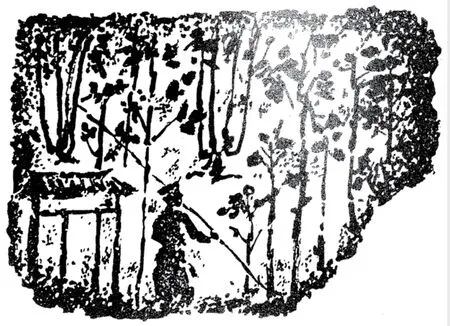
Figure 1: Pictorial stone with the mulberry leafpicking image unearthed in Xindu District
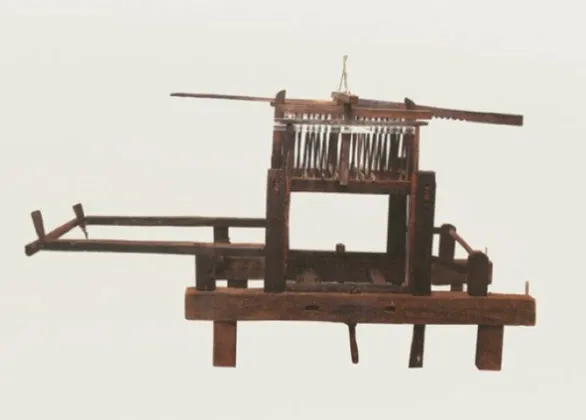
Figure 2: Duplicate of a jacquard loom excavated in the Laoguan Mountain Tomb from the Han Dynasty
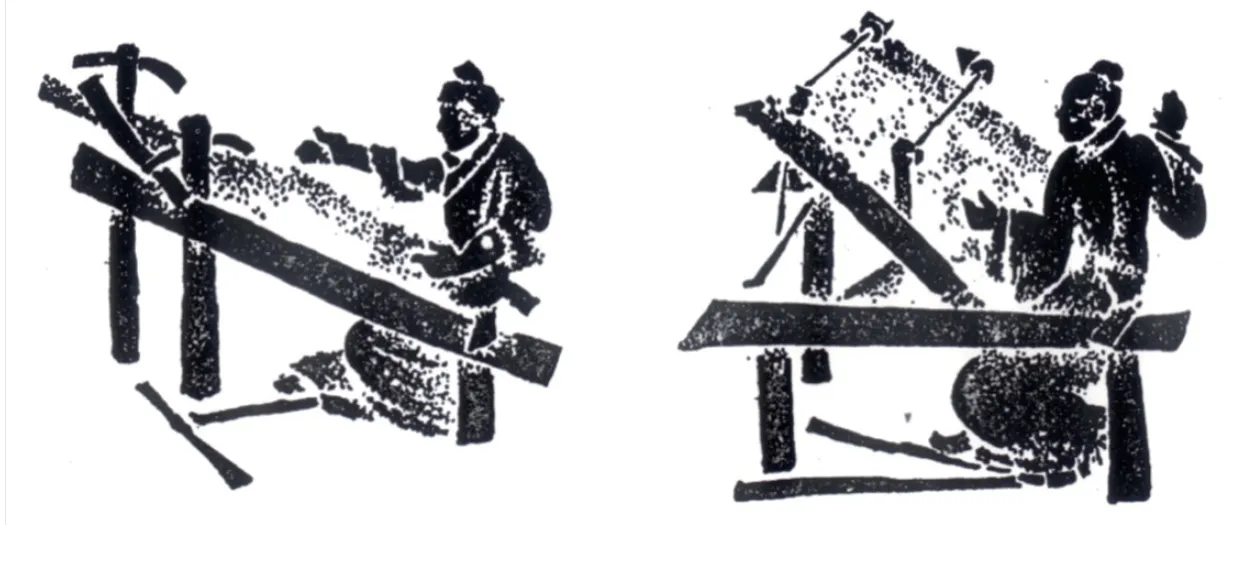
Figure 3: Silk weaving images on pictorial bricks from the Eastern Han Dynasty
2.3 There are also many impressive stories along the Northern Silk Road. Take the Shujin silk (or Shu brocade, a type of fabric native to the Shu area) arm protector from the Han Dynasty uncovered at Niya Ruins in Turpan, the Xinjiang Uygur autonomous region for example. The silk armband features five Chinese characters that read “five stars rising in the east benefit China.” This artwork is a great textbook to explain the cultural implications of such concepts as “five stars,”“east,” and “China.” It can also facilitate the understanding of astronomy in ancient China. Records indicate that “the Seven Mansions represented by the symbol of the Azure Dragon in the East” completes a cycle every year and rises on the eastern celestial sphere in spring, and also support the belief that the unity between heaven and men is “beneficial to China.” These stories speak to the fact that the Shu people started to see their culture as part of the Chinese culture and themselves as Chinese very early on. We can learn from such stories that the ancient Shu people were good at using the Shu brocade as a means to promote their “Chinese identity” along the ancient Silk Road. This kind of wisdom well predates today"s culturally inspired commercial products at gift shops (Tan, 2017).
3. We should also talk about the great poets. For example, Wang Bo, one of the four paragons of the early Tang Dynasty, made up his mind to “see the scenery in Shu” at the age of 19. He then traveled to Chengdu and wroteThirty-four Poems on Traveling in Shu. He praised the landscape in the Shu area as “the superb view of the universe” (Wang, 670). We can also tell the story of the great poet Li Bai in the Tang Dynasty(also known as the Immortal Poet) who wrote the verse“the city of Chengdu is like a heavenly-made paradise where the scene of thousands of houses and buildings greet the eyes” (Tan, 2004, pp.63-85) to depict thelinpanstyle of living characterized by living in harmony with nature. A similar story is how the poet Du Fu (known as Poet Sage) felt when he came to the Ba-Shu region from what is known as Gansu and Shaanxi provinces today. Upon his arrival, he suddenly felt like “walking into a totally different place where mountains and rivers are like never seen before” when he saw “exotic customs and housing styles that look like nests.” This is what the poet saw when he traveled to Chengdu (Tan, 2004, pp. 63-85). These stories can serve as footnotes to the iconic symbols of “Jiuzhaigou Valley” and “Giant Panda” which are eco-tourism resources that showcase the unique Ba-Shu ecological landscape. The Sanxingdui Ruins embody the diverse, mysterious, and distinct culture that best represents the “Land of Abundance.”
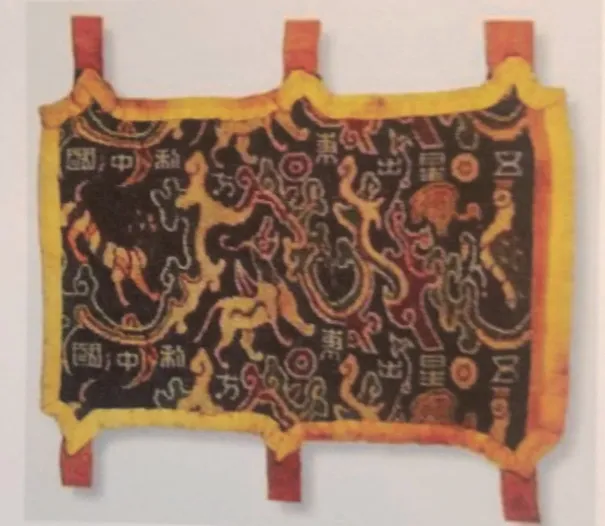
Figure 4: Silk armband embroidered with “five stars rising in the east benefit China”
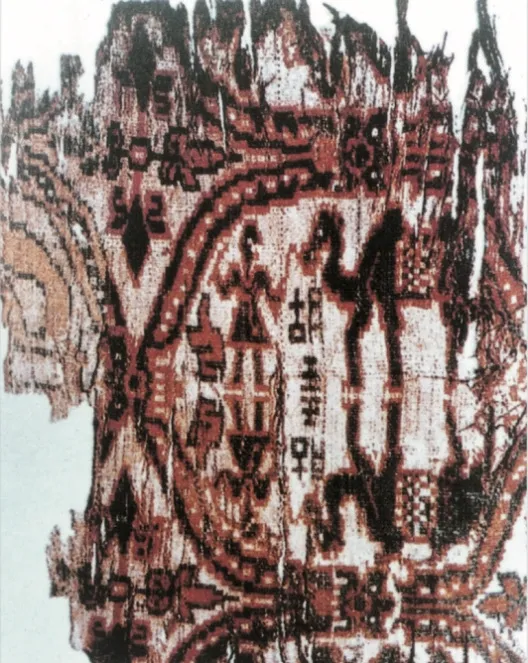
Figure 5: Shujin silk from the Han Dynasty unearthed in Turpan

Figure 6: The World Heritage Site Jiuzhaigou Valley Figure 7: Giant Panda
4. We should promote the modern expression of the concept of “Shuirun Tianfu” (literally meaning water nourishes Sichuan) and the spread of water-conservancy traditions in the world.
It is the consensus of the international community that there would be no civilization without rivers. However, such a concept is interpreted in the West as “the principle of all things is water,”as said by the Greek philosopher Thales, while water is perceived in the East as something “to be cherished for all generations,” as said by Li Bing, a great hydraulic engineer and official of the Qin State during the Warring States period (the original quote “treasure water forever” is found engraved on a stone statue of him from the Han Dynasty excavated at Dujiangyan). Li Bing inherited this idea from the concept of “true goodness is like water and nature should be respected,” upheld by the Shu-born Dayu (or the Great Yu) who successfully stopped floods at the Minjiang River. The world heritage Dujiangyan water conservancy project was made possible thanks to generations of efforts throughout history: starting from the Great Yu who tamed floods by “channeling the river around the Minshan Mountain to the Tuojiang River in the east,” to the King of Bieling in the Shu area chiseling a channel and draining the water through the Jintang Gorge” and finally to Li Bing"s construction of Dujiangyan that directed water from one river to another. It was then that the Sichuan Basin got flourished and blessed by the rich water resources. Guided by the Shu people"s concept of conserving water for 4,000 years, a fanshaped irrigation system was formed with the Minjiang and Tuojiang rivers as the core—a great landscape and ecological landmark on the Chengdu Plain (Tan, 2014).
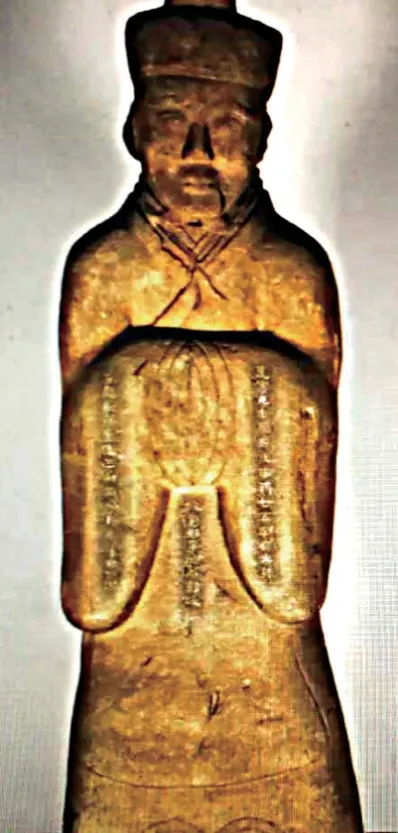
Figure 8: Statue of Li Bing from the Han Dynasty
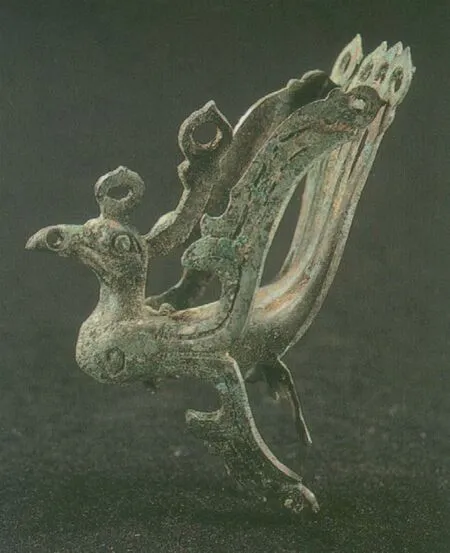
Figure 9: Worshipping the sacred bird
5. The mysterious Sanxingdui culture is still open to interpretations.Some theories hold that it was a theocracy originating from Central Asia or even from Jewish influences, but both are quite misleading. It must be made clear that Sanxingdui culture is rooted in the land of Ba-Shu. We should use the differences between the ancestral worshipping of the ancient Chinese and that of other primitive tribes as solid evidence to disprove the western discourse which interprets the Sanxingdui and Jinsha archaeological sites from the perspective of the western theocratic culture. We should construct our own discourse system of the “Ancient Shu culture” characterized by“ascending to the heaven and becoming immortals.” By analyzing the romanticism of “Shu culture that emphasizes immortality and sacred artifacts” as opposed to the realism shown in the “Central Plain culture that stresses rituals and ritual vessels,” we can build a conceptual and cognitive system centered around the imaginative Shu civilization that dreamed to soar through the sky and explore the mysteries of the universe. It is necessary to tell stories that embody these characteristics and spirit. History indicates that there were five ancestors of the ancient Shu State: Cancong, Baiguan, and Yufu, who all became immortals, the Emperor of Wang (known asWangdilocally), who transformed into a cuckoo, and the Kaiming Emperor, who became a divine Kaiming beast after his death. These impressive stories bear out what the cultural relics unearthed from the Sanxingdui and Jinsha archaeological sites show: ancient Shu people worshipped sacred trees, birds, feathered men, and the holy bird that represented the sun (Tan, 2013). The great scholar Sima Xiangru (who was born in the Shu area) from the Han Dynasty once praised the Shu people as being able to “understand the past and present, draw upon all the essence of different cultures, explore the universe, and achieve freedom in the world.” All these stories testify to the superb imagination of the ancient Shu people and the inheritance of the local culture throughout history. These stories can inspire people at home and abroad.
Furthermore, we can explain that the Minshan Mountain is also known as Little Kunlun, which is the origin of ancient Shu"s Immortal Taoism (Shenxian Dao) and the Chinese immortal system (Tan,2006). The ancient Shu had more than 3,000 years of history of theShenxian Daoculture, which the Shu people cherished, inherited, and developed. It is the ancestral origin of the Shu people and their collective memories that were embedded in their cultural genes. Such mentality brought about the leisure lifestyle typical of the Ba-Shu people who longed for the kind of carefree life enjoyed by immortals and who lived life as it was in their favorable natural environment. The ancientShenxian Daowas established 1,000 years earlier than Taoism, which was also founded in the Ba-Shu region.Taoism as known today was created in the late Eastern Han Dynasty by Zhang Ling who drew on the ancientShenxian Daoand completed the Taoist classicXiang"er(a commentary to Lao Tzu"sTao Te Ching) at the Heming Mountain. He then established a Taoist organization named “Twenty-four Governance” at Mount Qingcheng, thus founding the doctrine of Taoism. And accordingly, the Ba-Shu culture developed all by itself. Therefore, the native Ba-Shu cultural discourse should be rooted in its own ancestral origins. The ancient Qiang culture typical in ancient Gansu and Shu area as represented by the Dadiwan Site in Qin"an Township, Tianshui, Gansu province, the Yingpanshan culture in Mao county, the Baodun culture (dating back to the Neolithic Era) in the Chengdu Plain, the Guiyuanqiao Site (dating back to the Neolithic Era) in Shifang, the Sanxingdui culture, theshi"er qiao(meaning twelve bridges literally) culture and the Jinsha Site are all sources of the Shu civilization,which is fundamentally different from the theocratic discourse in the West, Central Asia, and West Asia (Stavrianos, 2006, p. 19).①Stavrianos hold that Chinese civilization, a great civilization that has never had a priestly class at any time, has a unique secularism. And the huge division that exists between the priests and the laity and between the church and the country in other civilizations in Europe and Asia does not exist in China.
6. We should shape the brand image of Ba-Shu as an ideal tourist destination where a visitor can experience the essence of Chinese culture. We can also promote selected iconic Sichuan dialect phrases such asanyi(“ease” which originates from theBook of Songsand Zhuangzi"s words),bashi(which originates from the Ba people describing the comfort when eatingbaba, a kind of local food in the local housing calledDiaojiaolou), andbaohan(meaning “please be tolerant,” “you"re welcome,”or “no need to apologize”) so that tourists can experience and enjoy the charm of the genuine Ba-Shu culture (Zhang, Tang & Tan, 2014, p. 411).
Ultimately, “Ease in Sichuan” embodies the kind of tourism featuring world heritage sites,ecological wonders, a comfortable lifestyle, spiritual transcendence inherent in Confucianism, Taoism,Buddhism, and poetry, and red tourism characterized by visits to historical sites with a revolutionary legacy. These are collectively named “Tianfu Shenyou” (lingering in the “Land of Abundance”)which showcases the integrated local tourist resources encompassing at least the following eight tourist systems, deep-rooted in history and enhanced in modern times (Zhang & Tan, 2007).
6.1 Traditional travel events include the Grand Tour on the Huanhua River dating back to the Tang and Song dynasties, the Baihuatan Lake Tour, the Chengdu City Tour in December, the Night Tour on the bank of Jieyu Creek around the Daci Temple, the public travel event calledaoyouin Chengdu featuring the prefecture chief (known asaotou, or travel leader) leading the visitors who could have a rest when feeling tired (known asaochuang) in the ancient times and the competition among the various opera troupes on the banks of the Jinjiang River. These time-honored tourism traditions in the Ba-Shu region are remarkable resources to inspire the revival of the Jinjiang night tour today.
6.2 The western Shu area is known as the birthplace of tea culture in China and the world, the earliest tea planting, the invention ofgaiwantea brewing (tea brewed in lidded cups), the earliest teahouse andsengliao(meaning monk"s hostels literally) culture, and the earliestwentea ceremony (tea practices by scholars) andwutea ceremony featuring the “18 tea pouring techniques resembling the movements of a flying dragon” (Tan, 2020).
6.3 Sichuan has been the most prosperous rural tourist destination in China since homestay tourism began to take shape in what was known as the Ba-Shu region as early as the Song Dynasty.At that time, Ba-Shu was praised by the great poet Lu You as the best place to experience “the happy countryside lifestyle and to get rid of the fierce competitions in the city.”
6.4 Sichuan can make full use of its unique culinary art which is characterized by “spiciness and good taste.” This tradition, which has been passed on for 3,000 years, helps to form the modern culinary system that can best be captured by the saying “100 dishes with different flavors, each dish with its own style while pungent and fresh flavors coexist, soothing the palate, and calming your heart.” Chengdu is already a gourmet capital renowned throughout the world as it boasts many timehonored foods and restaurant brands with the emergence of innovative options such as Ba-Shu Tea Banquets and Chengdu Top Ten Banquets (Tan, 2004).
6.5 Sichuan is known for its long salt-production history. The traditional salt industry represented by the city of Zigong, which hosts the oldest Shenhai salt-culture-based well, is developing itself by promoting salt to be “the gentleman"s taste.” As a result, the unique salt cuisine (locally known asyanbangcuisine) is taking shape, and the old Salt/Tea Road is also evolving.
6.6 Chengdu can take the Shu School ofguqin(a traditional Chinese string instrument) playing as the best brand name for promoting itself as an oriental music capital in ancient times. This school ofguqinplaying started with Sima Xiangru and Zhuo Wenjun (a famous poet couple) in the Han Dynasty. After the Wei and Jin dynasties, it developed into a self-contained style of “Shu Guo Xian(literally meaning the Shu Sate"s music).” In the Tang Dynasty, the Shu area became famous for its Leiqin(guqinmade by the Lei family). The Shu School culminated in the Qing Dynasty when master Zhang Kongshan composed the “72gunfuLiu Shui” (Flowing Streams) at Mount Qingcheng. The song even entered space with the NASA Voyager 1 spacecraft mission in 1977 as it was among the carefully selected music pieces produced on the “Golden Record” to represent human civilization.Since 2012, the spacecraft has crossed into inter-stellar space and been expected to be discovered by an extraterrestrial civilization. Today, there are hundreds of music clubs across Sichuan represented by Professor Zeng Chengwei, the sixth-generation inheritor of Zhang Kongshan. Sichuan has become a shrine for music lovers and an important place for the resurgence of traditional music (Tan, 2013, pp. 1-9).
6.7 It is said in Sichuan that “the Shu Opera is unrivalled in the world.” Chengdu is home to the earliest Tangzaju(an opera form in the Tang Dynasty), the earliest opera troupetie ya pai er, and the earliest mechanized stage set featuring a stream-like floor on which lotus props were placed. Among the local operas in the Qing Dynasty, the Sichuan opera andQingyinwere the earliest to develop.Theshuochangart (telling and singing) of Ba-Shu can be traced back to various forms of “telling and singing figurines” from the Han Dynasty. These figurines manifest optimism and humor as written by the poet Lu You in his verse: “no one can control how others perceive him after he is dead, and the whole village is talking about the anecdotes of Mr. Cai amusedly” (Tan, 2004).
6.8 The Ba-Shu school of painting enjoys a long history, and the Daci Temple hosts iconic oriental murals. Dazu and Anyue are renowned for their stone carving art (Tan, 2009).
7. We should publicize and explain the history of the transportation, economic and cultural networks in the Ba-Shu region whose latest development is the Chengdu-Chongqing economic circle.
We can explain the Ba and Shu cultural community which embodies the Chinese wisdom of compatibility of hard and soft, the harmony betweenyinandyang, innovation and conservation, mutual learning and integration, and inclusiveness and openness. We can also tell stories of rural revitalization and poverty alleviation with reference to the rural culture characterized by thousands of years of mixing and integration between urban and rural areas. The following are all good examples: Ba-Shu people"s settlements as represented by the Luojiaba ruins and the Chengba ruins of the former Ba State,the Baodun culture, the Sanxingdui culture, theshi"er qiaoculture, the ship burial culture (discovered in downtown Chengdu from the Warring States period in the former Shu State); and how such settlements ultimately developed into the ancient capital. Then we can continue with today"s construction of the“park city”, talk about the revitalization of the countryside, the construction of greenways, the beautiful bamboo forest landscape, and the integration of urban and rural areas. This is all about the Ba-Shu cultural community with shared roots over the past thousands of years (Tan, 2008).
The key to the Chengdu-Chongqing economic circle lies in building a cultural circle, which is an unstoppable trend and is what the current development requires. The differences and complementarity between Ba and Shu are the driving forces for common prosperity, and the integration of the two is the direction of future developments. The competition between Ba and Shu is a process of mutual learning (Tan, 2020).
8. The Ba-Shu region is home to a wealth of famous historical figures.
Historical figures are those who led the developments of their times, and who are the backbone of the nation and the pioneers of innovations and progress. Over the course of Chinese history, the Ba-Shu region was always like a vast sky where eminent figures shine like stars. The great scholar Sima Xiangru in the Han Dynasty once praised the celebrities in Ba-Shu as “extraordinary people doing extraordinary things and accomplishing extraordinary achievements” (quote from Sima Xiangru"sQuestions for Folks in Shu). The Ba-Shu people are known for their bravery and pioneering spirit (Gu,2020). Sun Yat-sen also spoke highly of the celebrities of Ba-Shu, saying that “talents of Shu are truly outstanding and are like precious gemstones.” Loyalty, uprightness, magnanimity, and elegance are what define the historical celebrities in Sichuan. They made contributions to their hometowns, the local region, and ultimately the Chinese nation. They secured an important position in Chinese history through “extraordinary contributions.” There are many old sayings commending outstanding figures and cultural leaders such as “great literature exists between heaven and earth; my hometown Shu is home to a great many masters” and “great generals are from the Ba area while wise ministers are from the Shu area.” With their superb wisdom and talents, they are recognized for their meritorious achievements in history. What they left was a rich historical memory and heritage that we must hold dear, pass on, make innovations on, and remember forever. For that reason, Sichuan launched the“historical celebrities and cultural inheritance and innovation project,” and the first and second groups of 20 historical figures were selected. The project has yielded good outcomes in regards to inheriting and developing the cultural heritage.
The names on the two lists can be divided into six categories: the first category covers politicians who dedicated themselves to governing the country and regarding people as the foundation, including the Great Yu (one of the Chinese ancestors), the renowned strategist Zhuge Liang, and Wu Zetian,the only empress of China whose rule marked a prosperous period in the Tang Dynasty; the second category is represented by male scholars such as Sima Xiangru, Yang Xiong, Chen Zi"ang, Li Bai(Immortal Poet), Du Fu (Poet Sage), Su Shi, Yang Sheng"an and Li Tiaoyuan, and female poets like Zhuo Wenjun and Xue Tao. The third category involves great historians including Chen Shou and Chang Qu; the fourth category includes innovative educators like Wen Weng and Zhang Shi; the fifth category features technological innovators such as Li Bing, Luo Xiahong, and Qin Jiushao; the epic and cultural hero Gesar, also an icon of the national heritage, is included in the last category.
9. The Shu school of learning is the academic core of the Ba-Shu culture. From an academic perspective, the Shu school emphasizes literary classics, history, and people"s wellbeing based on the interpretation of Confucian Classics and also draws upon Buddhism and Taoism, among other schools of thought. From the practical perspective, the Shu school is well-versed in the traditional “Six classical arts” (rites, music, archery, riding, writing and arithmetic) as well as the Chinese zither, the game of Go, calligraphy, and painting (Tan, 2017).
10. We should promote the historical and cultural records made in Ba-Shu.
About 100 firsts in China and more than 30 firsts in the world have been created in the Ba-Shu region, and they deserve to be known around the world.
杂志排行
Contemporary Social Sciences的其它文章
- Informatization and Logical Semantic Deduction of Chinese Nouns and Verbs
- Cultural Landscape Analysis of the Huashan Rock Art Area
- Analysis of the Features of the Vernacular Plank Houses of the Qiang Ethnic Group in Southern Songpan County: A Case Study of Xiaoxinggou
- Study on Biogas Development in the Qinba Mountain Area in the Background of Developing Ecological Civilization
- Renaissance of Chinese Culture and Prosperity of the World of Arts
- 《当代社会科学(英文)》稿件格式参考
